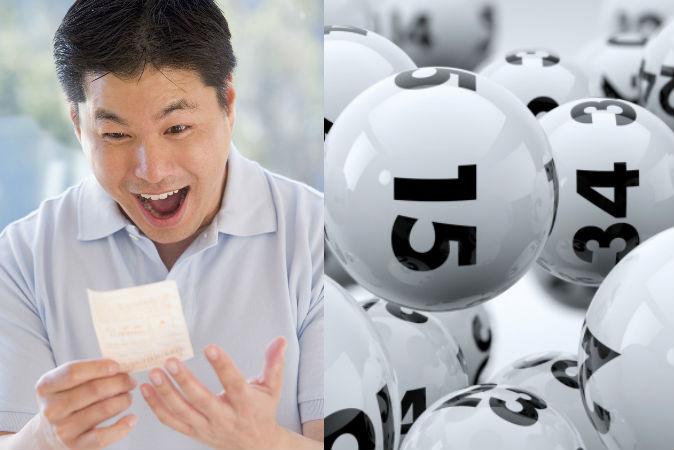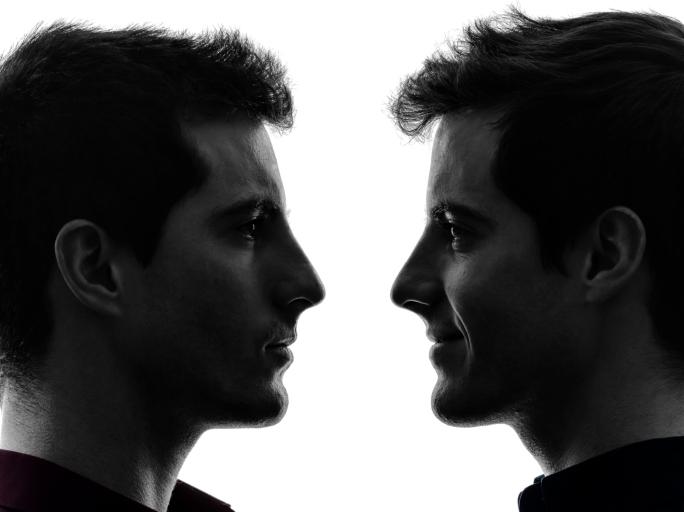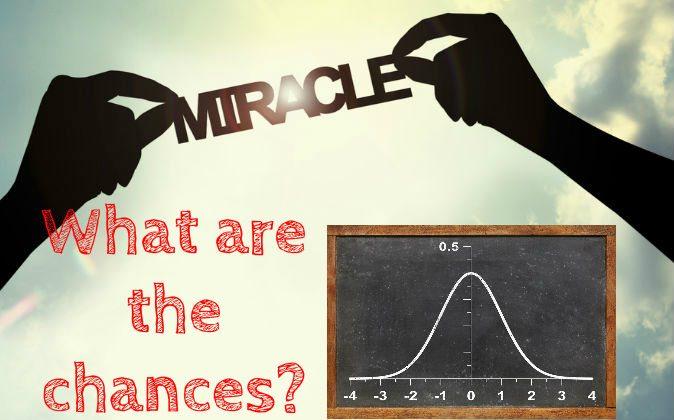When people find profound meaning in coincidences, viewing them as divine messages, it’s sometimes viewed as unscientific. Science stands on the side of calculating the probabilities, analyzing the statistics, and considering psychological factors at play.
But maybe the two sides aren’t mutually exclusive. Maybe the divine communicates by pushing the boundaries of what is probable, but will never break through them completely to reveal itself in plain light.
Some statisticians show that what seems immensely improbable may not be that improbable afterall. Yet, notes David J. Hand, one such statistician, that doesn’t mean we shouldn’t feel astonished upon encountering such an event. Others, such as psychiatrist Dr. Bernard Beitman and statistician David Aldous, warn that the stats fall short in analyzing the complex circumstances of individual, real-life coincidences.
There’s a tendency in the study of statistics related to coincidences to look at a type of coincidence (someone winning the lottery twice, for example) that’s easier to study mathematically and say, “Since we can show this one type of coincidence is not that improbable, all instances of people winning the lottery twice, or even all instances of coincidence could equally be attributed to chance.”
Chances of Winning the Lottery Twice

Images via Thinkstock
On February 14, 1986, a New York Times article stated that Evelyn Marie Adams had won the top prize in the New Jersey lottery twice within four months, a 1 in 17 trillion chance. Stephen Samuels and George McCabe calculated, however, that it was actually a chance of 1 in 30, according to a coincidences study by Harvard statisticians Frederick Mosteller and Persi Diaconis.
In 2010, it was reported that the national lottery of Israel featured the exact same six numbers (out of 45) twice in the same month, and statistics professor Isaac Meilijson of Tel Aviv University was quoted as saying that “the incident of six numbers repeating themselves within a month is an event of once in 10,000 years.”
But, Columbia University statistician Andrew Gelman said on his website that if there are 100 lotteries worldwide (a rough estimate), the probability is actually once in 100 years. It’s all about the scale. It may only be likely to happen once in 10,000 years in Israel, but globally, it is likely to happen once in 100 years. That’s still impressive and surprising, but not quite as improbable as it first appears.
This issue of scale often comes up in discussing the probabilities of strange coincidences.
The Law of Truly Large Numbers and Littlewood’s Law of Miracles
Part of Hand’s explanation of the Law of Truly Large Numbers in his book, “The Improbability Principle: Why Coincidences, Miracles, and Rare Events Happen Every Day,” reads: “Given enough opportunities, we should expect a specified event to happen, no matter how unlikely it may be.”
It’s about getting the really big picture. We view things on a human scale. It seems very improbable when it happens to me, but when it’s viewed as happening to one out of billions of people who’ve lived on Earth over the course of thousands of years, it’s not that outlandish.
Professor John Edensor Littlewood of Cambridge University in 1955 formulated his Law of Miracles, described in this book review by Freeman Dyson for the New York Review of Books: “Being a professional mathematician, [Littlewood] … defined a miracle as an event that has special significance when it occurs, but occurs with a probability of one in a million. … Littlewood’s law of miracles states that in the course of any normal person’s life, miracles happen at a rate of roughly one per month.”
The proof boils down to this: During your waking life, you experience something at the rate of about one impression per second. The total number of “events” you experience in a day is thus about 30,000 and the number you experience in a month is about 1 million. If a miracle is a 1 in a million event, you can expect a miracle once a month.
Of course, not everyone would define the word “miracle” as Littlewood does.
Potential Problems With Reducing Human Experience to Equations

Conceptual image of statistics via Shutterstock
Aldous, a professor of statistics at the University of California–Berkeley, wrote in his book “On Chance and Unpredictability,” that statisticians miss three essential features of real-life coincidences:
1. Coincidences are judged subjectively, different people will make different judgments.
2. If there really are gazillions of possible coincidences, then we’re not going to be able to specify them in advance.
3. What constitutes a coincidence depends very much on the concrete nature of the events.
Aldous also wrote: “Real life offers many different domains of coincidence, in particular multiple affinity coincidences ... these are the mainstay of anecdotes but are harder to contemplate mathematically.”
Beitman wrote in an email to Epoch Times: “The base rate for most strange coincidences have not been calculated. So the statistician implies that the base rate could be calculated and therefore that is a full explanation for the occurrence of the event.”
The difference between looking at statistics and deciding the probability of any given coincidence, said Beitman, is the difference between past and future, between hard data and theory.
“Statistics is about the past and probability is about the future,” he said. “Stats relies on gathered data. Probability is full of theory.”
A Widow’s Coincidence Analyzed

(Thinkstock)
Some people may subconsciously create coincidences, said Beitman, giving an example of a coincidence reported by a participant in his research: “When I was widowed, I looked back at the previous week and saw many meaningful coincidences leading up to that point. For example, his birthday was on a Wednesday, the day of his car accident. He passed away the next day. When I began dating again, I was concerned with what my late husband would think. One day while visiting his grave, I accidentally cut my ring finger with some grass clippers. I had to go to the Emergency Department where they removed my wedding ring. My boyfriend and I took it as a sort of sign that it was OK to proceed in our relationship…”
Beitman said: “She had cut her own finger! Yet she felt the necessary removal of the ring at the hospital was a sign from her husband. Many other romance stories suggest to us that the people involved are directly creating their own coincidences while not being aware of doing so, just like this woman. But the means by which they subconsciously create the needed coincidences are often more difficult to untangle than in this woman’s method.”
A Strange Story of Separated Twins With Mirrored Lives Analyzed

A file photo of twin brothers. (Thinkstock)
Two twins were separated at birth and adopted by different families. Both families independently decided to name the boys James. Both boys entered law enforcement—one as a security guard, the other as a deputy sheriff. Both married women named Linda. Both got divorced and remarried. Both remarried women named Betty. One named his son James Alan. The other named his son James Allan. When they eventually met, they discovered the eery similarities in their separate lives. Their story is recounted in a People magazine article.
According to census statistics, James is the most common male name in the United States, with 3.3 percent of the population named James. Linda is the third most common female first name. Betty is the 14th most common female first name, Alan is No. 91 on the list of common male first names. There are roughly just under 1.5 million law enforcement employees in the United States, included federal, state, and municipal police, and security guards.
Hand said in an email to Epoch Times: “The story, naturally, omits all the things that don’t match. I imagine that the two Lindas differed in various ways, as did the two Bettys. Did the twins have other children in addition to their sons James Jr? The matching characteristics have been pulled from the mass of things that don’t match, and our attention drawn to them. This is where the psychological aspects of such things comes into play, acting synergistically with the statistical aspects.
“My overall point is that perhaps the chance of this sequence of matches is not so extraordinary as it appears. That doesn’t mean that such a thing is not improbable—and it should in no way detract from the sense of astonishment we feel when we read of the matches. It’s just that we should then dig deeper and think ’surprising, but not cosmically so.'”
ALSO SEE PART 1: “The Science of Coincidences”
Follow @TaraMacIsaac on Twitter and visit the Epoch Times Beyond Science page on Facebook to continue exploring the new frontiers of science!
*Conceptual images of a miracle, and statistics via Shutterstock






